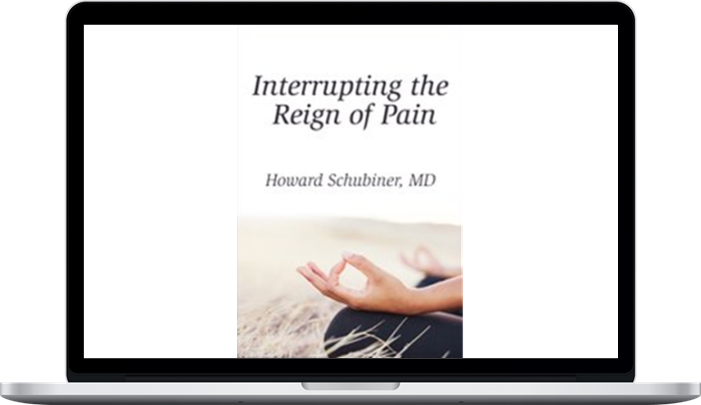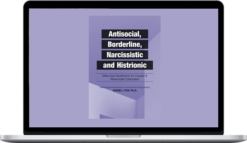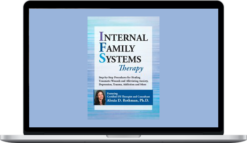Howard Schubiner – Interrupting the Reign of Pain
$149.00 $53.00
»Instant Delivery
Description
Howard Schubiner – Interrupting the Reign of Pain
Typically, physical and psychological pain are treated separately, even when they’re deeply intertwined. Nearly half of all therapy clients suffer from chronic physical pain, which often has no clear medical cause, including back and neck pain, headaches, and fibromyalgia.
We now know that all pain is constructed by the brain’s alarm mechanism, which can be activated by either physical injury or perceived emotional threat. In this workshop, you’ll learn tools to simultaneously address physical and emotional pain in your work with clients.
Objectives
- Articulate how the brain’s predictive coding mechanisms create and reinforce physical pain in clients.
- Determine in session if a client has psychophysiologic-induced pain.
- Articulate concepts of psychophysiologic pain to clients and implement cognitive-behavioral techniques designed to eliminate it.
- Implement Emotional Awareness and Expression Therapy techniques to help alleviate clients’ pain symptoms.
Outline
Knowledge about Psychophysiologic Disorders (PPD)
- How is pain produced and processed in the conscious and subconscious brain
- What are some of the common manifestations of PPD
- Relationship between stressful life events and PPD
- Overview of treatment of PPD
How to assess if someone has PPD, including examination skills if appropriate (Medical assessment)
- Medical history
- Review of records and imaging studies
- The search for discrepancies
- Review of symptoms checklist lifetime
- Medical examination or review of medical examinations
How to determine the psychological cause of PPD
- Early childhood history—priming events
- Teen and early adult history—triggering events
- Later life history, search for themes and patterns
- Connection between onset and exacerbation of symptoms and stressful life events
How to educate patients and personalize information about PPD
- Explaining PPD 101—the information
- Review themes and relate life events to onset and exacerbation of PPD symptoms
- Obtain feedback and answer questions
How to implement the basic cognitive and behavioral elements of Treatment
- Education as a basis of treatment
- Understanding the concepts and applying them personally
- Believing in them and self-confidence to allay doubts
- Developing self-confidence for successful recovery
- Affirmations for recovery
- Challenging symptoms
- Conditioned responses and outcome independence
Description of expressive writing exercises, handouts only
- List of writing techniques (Lists)
- Free writing
- Unsent letters
- Dialogues
- Gratitude
- Forgiveness
- Barriers to recovery
- Responding to life situations
- Writing a new life narrative
Description of the role of meditative exercises, handouts only
- Mindfulness practices
- Attending to emotional states
- Decreasing self-induced suffering
- Tolerating symptoms as transient events
- Guided meditations
How to guide a PPD patient in emotional awareness and expression exercises
- Basic principles
- Description of steps in the process
- Demonstration of the process
Conclusions, Questions and Answers
About Howard Schubiner

Howard Schubiner, MD, is an internist at Providence Hospital in Michigan and a professor at Michigan State University. He’s the author of Unlearn Your Pain, Unlearn Your Anxiety and Depression and coauthor of Hidden from View.
Speaker Disclosures:
Financial: Howard Schubiner is an attending physician at Children’s Hospital of Michigan; harper Hospital; Hutzel Hospital; and Detroit Receiving Hospital. He is a faculty member at Providence Hospital. He is an author for Mind Body Publishing and receives royalties. Dr. Schubiner receives a speaking honorarium from PESI, Inc. He has no relevant financial relationships with ineligible organizations.
Non-financial: Howard Schubiner is a Fellow for the American Academy Pediatrics; a Fellow for the American College of Physicians; and a Fellow for the Society for Adolescent Medicine.
More courses from the same author: Howard Schubiner
Delivery Policy
When will I receive my course?
You will receive a link to download your course immediately or within 1 to 21 days. It depends on the product you buy, so please read the short description of the product carefully before making a purchase.
How is my course delivered?
We share courses through Google Drive, so once your order is complete, you'll receive an invitation to view the course in your email.
To avoid any delay in delivery, please provide a Google mail and enter your email address correctly in the Checkout Page.
In case you submit a wrong email address, please contact us to resend the course to the correct email.
How do I check status of my order?
Please log in to HealingCourse account then go to Order Page. You will find all your orders includes number, date, status and total price.
If the status is Processing: Your course is being uploaded. Please be patient and wait for us to complete your order. If your order has multiple courses and one of them has not been updated with the download link, the status of the order is also Processing.
If the status is Completed: Your course is ready for immediate download. Click "VIEW" to view details and download the course.
Where can I find my course?
Once your order is complete, a link to download the course will automatically be sent to your email.
You can also get the download link by logging into your HealingCourse account then going to Downloads Page.
Related products
Total sold: 7










